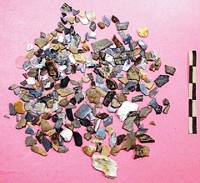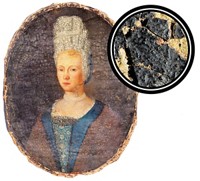Advertisement
Grab your lab coat. Let's get started
Welcome!
Welcome!
Create an account below to get 6 C&EN articles per month, receive newsletters and more - all free.
It seems this is your first time logging in online. Please enter the following information to continue.
As an ACS member you automatically get access to this site. All we need is few more details to create your reading experience.
Not you? Sign in with a different account.
Not you? Sign in with a different account.
ERROR 1
ERROR 1
ERROR 2
ERROR 2
ERROR 2
ERROR 2
ERROR 2
Password and Confirm password must match.
If you have an ACS member number, please enter it here so we can link this account to your membership. (optional)
ERROR 2
ACS values your privacy. By submitting your information, you are gaining access to C&EN and subscribing to our weekly newsletter. We use the information you provide to make your reading experience better, and we will never sell your data to third party members.
Analytical Chemistry
Dating Artifacts Nondestructively
ACS Meeting News: Plasmas and supercritical fluids could replace harsh acid and base soaks for cleaning archaeological relics
by Jyllian Kemsley
March 29, 2010
| A version of this story appeared in
Volume 88, Issue 13

A new technique involving plasmas and supercritical fluids allows archaeologists to determine the age of artifacts without damaging them, reported Marvin W. Rowe, a chemistry professor at Texas A&M University, on Tuesday at the ACS national meeting in San Francisco.
Traditional radiocarbon dating techniques typically require removing a sample from an artifact. The sample is then cleaned by soaking it in strong acid, base, and acid again at 50 °C to rid it of contaminating organic material. Finally, it is burned before using accelerator mass spectrometry to look for 14C.
Rowe, in collaboration with University of Central Arkansas chemistry professor Karen L. Steelman, previously developed a technique to use oxygen plasma to oxidize carbon in artifacts to CO2 and then collect the gas and convert it to graphite for radiocarbon analysis (Am. Antiquity 2004, 69, 741). Now, they've extended the method to eliminate the harsh cleaning steps, instead using argon and oxygen plasmas to replace the acid soaks and a supercritical fluid composed of CO2 and methanol to replace the base.
The whole approach yields accurate dates with little visible change in material as fragile as 5,000-year-old eggshells and 2,000-year-old cloth and grass, Rowe said. Whole artifacts can also be analyzed intact, limited only by the size of the reaction chamber, he added.





Join the conversation
Contact the reporter
Submit a Letter to the Editor for publication
Engage with us on Twitter